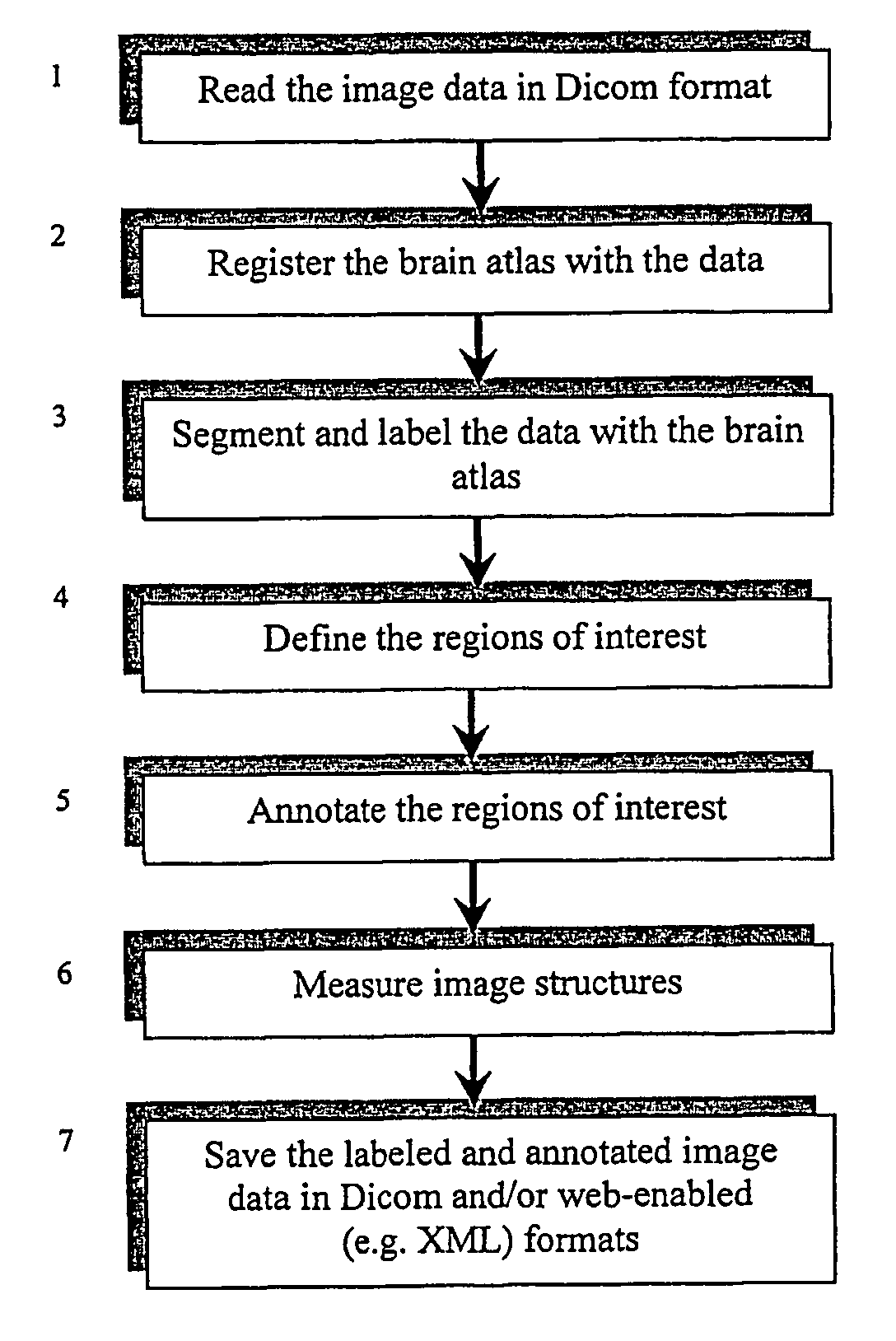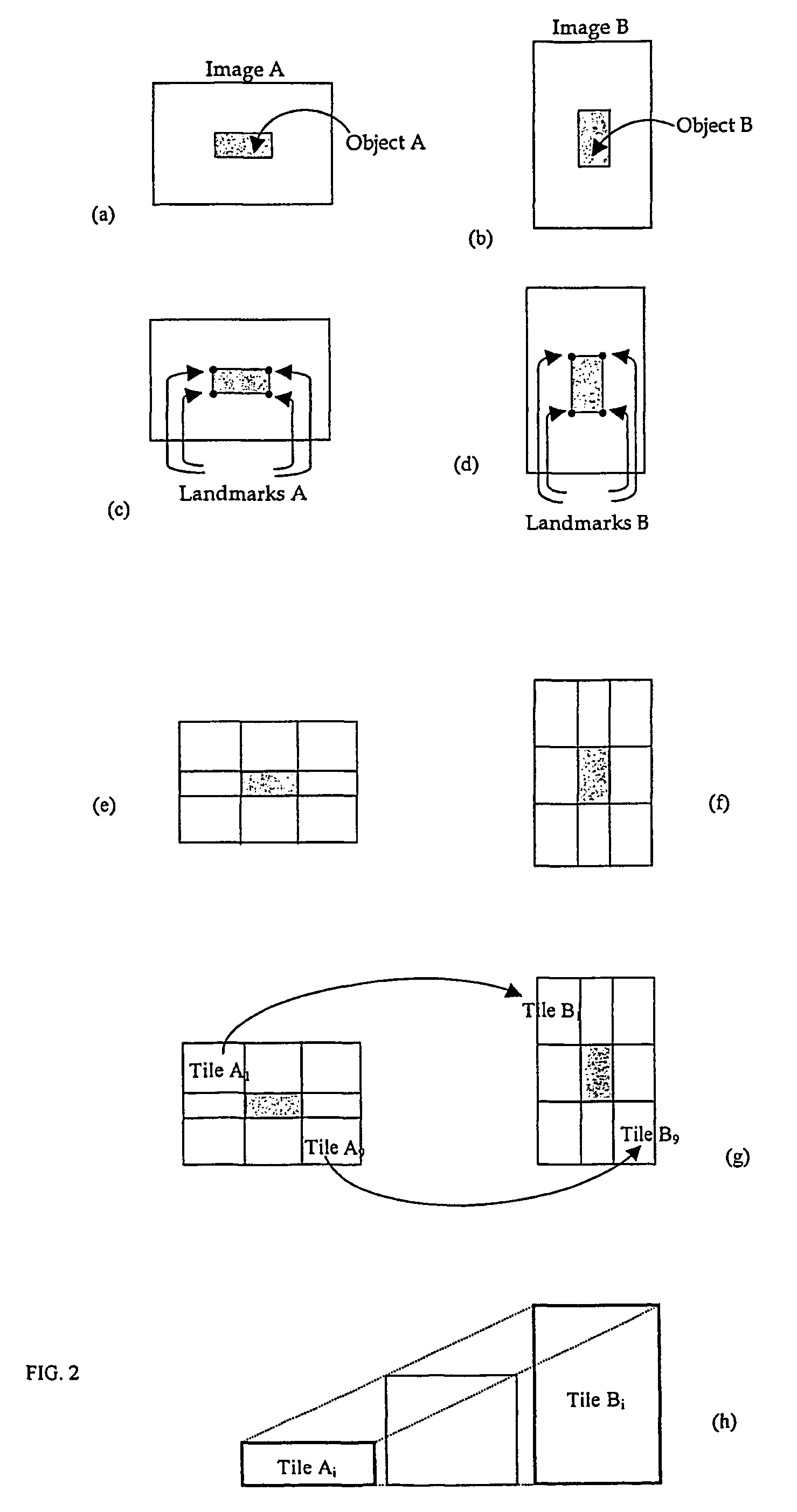Methods and apparatus for processing medical images
- Summary
- Abstract
- Description
- Claims
- Application Information
AI Technical Summary
Benefits of technology
Problems solved by technology
Method used
Image
Examples
Embodiment Construction
1. Introduction
[0038]FIG. 1 illustrates in conceptual terms a method according to the present invention.
[0039]The patient specific image data are read in Dicom format (step 1), which is a standard format in diagnostic imaging and Dicom readers are commonly available. Then in step 2, the brain atlas is registered with the data (a fast, automatic method to do it is given below), so the neuroradiologist can segment and label the data by means of the atlas (step 3). In particular, the region(s) of interest can be defined on the images (step 4) and annotated (step 5), and segmentation and labeling can be done within these regions of interests. In addition, the image structures can optionally be measured (step 6). In step 7, the atlas-enhanced data can be stored for further processing by other medical professionals, such as neurologists and neurosurgeons. In particular, the atlas-enhanced data can be stored in Dicom format and / or in any web-enabled format such as XML. These steps are desc...
PUM
 Login to View More
Login to View More Abstract
Description
Claims
Application Information
 Login to View More
Login to View More - R&D
- Intellectual Property
- Life Sciences
- Materials
- Tech Scout
- Unparalleled Data Quality
- Higher Quality Content
- 60% Fewer Hallucinations
Browse by: Latest US Patents, China's latest patents, Technical Efficacy Thesaurus, Application Domain, Technology Topic, Popular Technical Reports.
© 2025 PatSnap. All rights reserved.Legal|Privacy policy|Modern Slavery Act Transparency Statement|Sitemap|About US| Contact US: help@patsnap.com



